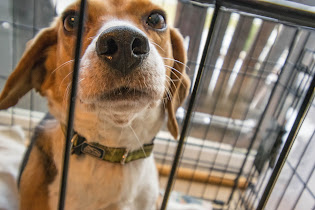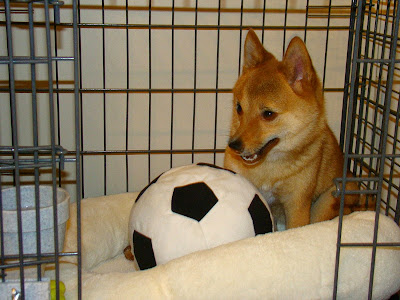Crate Training Adult Dog - Crate training is an excellent way to provide a safe and comfortable space for your adult dog. While many people associate crate training with puppies, it can be just as effective for older dogs who may benefit from a cozy and secure space of their own. In this article, we'll explore the benefits of crate training an adult dog, the steps involved in the process, and some tips for making the experience as positive as possible.
Benefits of Crate Training an Adult Dog
Crate training has numerous benefits for adult dogs, including:
- Providing a Safe Space: A crate can serve as a safe space for your dog to retreat to when they need to relax or feel secure. Dogs are den animals by nature, and a crate can mimic the feeling of a den, making them feel more comfortable and secure.
- Preventing Destructive Behavior: Dogs that are not crate trained may chew on furniture or other household items when left alone, leading to damage and potential hazards. Crate training can help prevent destructive behavior by providing a secure space where your dog can relax without getting into trouble.
- Travel Convenience: Crate trained dogs are more comfortable and secure when traveling, whether by car or plane. Many airlines require dogs to be in a crate during flights, so crate training can make travel less stressful for both you and your furry companion.
Steps to Crate Training an Adult Dog
Here are the steps to crate training your adult dog:
- Choose the Right Crate: The first step is to choose the right crate for your dog. The crate should be large enough for your dog to stand up, turn around, and lie down comfortably, but not so big that they can use one end as a bathroom and the other as a sleeping area.
- Introduce the Crate: Start by placing the crate in a quiet area of your home, with the door open, and encouraging your dog to explore it. You can place treats, toys, or even their food bowl in the crate to make it a more appealing space.
- Encourage Your Dog to Spend Time in the Crate: Gradually encourage your dog to spend more time in the crate, starting with short periods and gradually increasing the length of time. You can offer treats or praise when they go into the crate voluntarily.
- Close the Door: Once your dog is comfortable spending time in the crate with the door open, begin to close the door for short periods, gradually increasing the amount of time they spend in the crate with the door closed. Make sure to stay nearby during this time and provide plenty of positive reinforcement.
- Extend the Time: Over time, your dog should become more comfortable spending longer periods in the crate with the door closed. You can gradually increase the amount of time they spend in the crate, while still offering plenty of praise and treats.
Tips for Successful Crate Training
Here are some tips for successful crate training:
- Never Use the Crate as Punishment: The crate should always be a positive space for your dog, so never use it as punishment or confinement for extended periods.
- Use Positive Reinforcement: Offer treats, praise, and toys to encourage your dog to spend time in the crate voluntarily.
- Gradually Increase the Time Spent in the Crate: Gradual increases in time spent in the crate can help your dog become more comfortable and feel less anxious.
- Offer Comfort Items: Place a comfortable bed or blanket in the crate to make it a cozy space for your dog.
- Be Patient: Every dog is unique, and it may take some time for your dog to become comfortable with crate training. Patience and consistency are key to success.
In conclusion, crate training an adult dog can be a beneficial process for both you and your furry friend. By providing a safe and secure space, you can help prevent destructive behavior, create a more comfortable traveling experience, and give your dog a place to retreat to when they need to relax. The key to successful crate training is to choose the right crate, introduce it gradually, and use positive reinforcement to encourage your dog to spend time in the crate. Remember to be patient and consistent, and never use the crate as punishment. With time and patience, your adult dog can learn to love their crate and benefit from having a cozy and secure space of their own.







.jpg)








Tidak ada komentar:
Posting Komentar